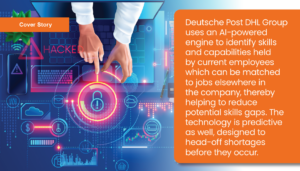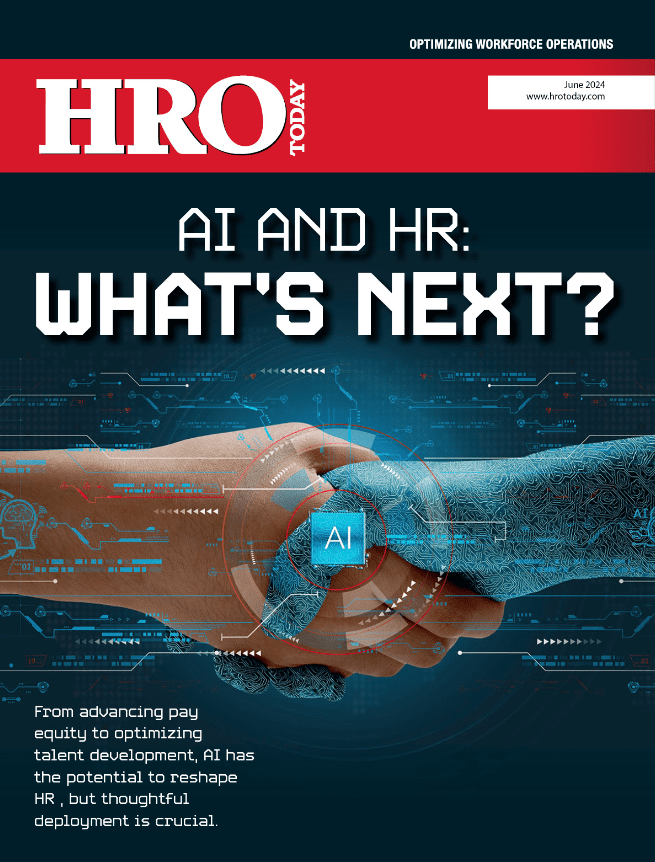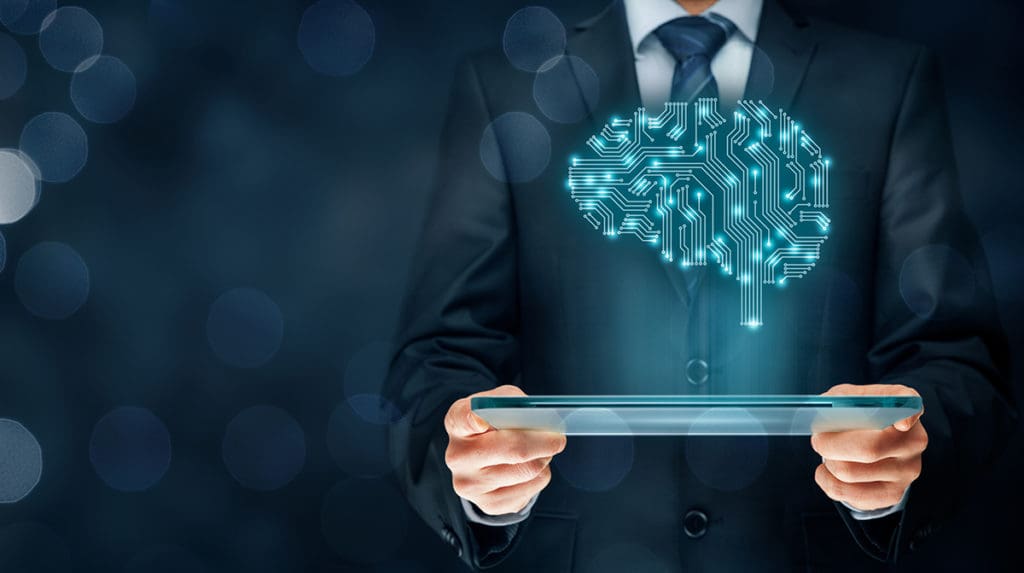Artificial intelligence is getting a lot of attention. Will its bubble burst or are its benefits unprecedented?
By Simon Kent
AI has been dominating recent headlines and is causing much handwringing. Not only does this new technology appear to have the power to take away jobs, it could possibly take over the world. Even those involved in its development and promotion have been expressing their fears that everything is moving too fast.
Whatever the zeitgeist, the reality is somewhat more sober. The current consternation over AI surrounds the abilities of generative AI to apparently write and create convincing content: words, pictures, videos, and so forth. To some degree, AI and machine learning has certainly been within the HR sector for some time, powering the ability to search through numerous candidate applications, offering automation of processes, and more.
According to Áine Fanning, managing director of Cpl’s Talent Evolution Group, whilst AI could revolutionise how HR professionals work, it is still the case that the more strategic and creative initiatives should come from humans. In much the same way that previous technology has taken care of administration and data management, AI could further streamline processes whilst leaving employees to design and oversee the function’s deliverables. “By delegating certain administrative tasks to AI, HR professionals can free up their time so they can focus on more strategic and creative tasks that require a human touch,” Fanning says.
Talent Evolution Group is using DaXtra Parser within their work. This technology uses a combination of machine learning, natural language processing, and semantics to differentiate keywords as they are used with text. The result when applied to CVs is that those CVs can be automatically entered into a database in a useable and accurate way. This in turn makes the search for an ideal candidate much quicker. “These branches of AI help our consultants work more efficiently to identify differentiation of job titles, locations, and skill levels,” explains Fanning.
AI cannot be implemented without due consideration, particularly since this form of technology is still developing. “As an ever-evolving technology, professionals across the HR industry should be continuously assessing the threats and risks of AI tools to ensure the safety of their organisations and staff,” says Fanning. “Currently, we know that there is an inherent risk of AI reproducing biases. AI tools work by aggregation, taking in large volumes of data and averaging this information to produce outputs. So, AI tools will reproduce the biases that exist in society at large and this cannot be disregarded.”
Information security is also a big concern around AI. The amount of data used plus the links and sharing required by the technology means issues of cyberattacks and identity theft are heightened.
“As HR and recruitment professionals, we must take ownership and manage these risks,” says Fanning. “It is our responsibility to safeguard workforces and continue building a safe, diverse, and inclusive workplace.”
Deutsche Post DHL Group uses an AI-powered engine to identify skills and capabilities held by current employees which can be matched to jobs elsewhere in the company, thereby helping to reduce potential skills gaps. The technology is predictive to some extent, designed to head off shortages before they occur.
“By harnessing AI, I truly believe we’re helping each and every member of our workforce feel a greater sense of purpose,” says Meredith Wellard, vice president of group learning talent and platforms at Deutsche Post DHL. “The tools we have introduced are helping boost employee engagement in the workplace because they are able to understand exactly what skills they need to develop, and also because it enables them to visualise their career path within the company. We’re putting our employees in the driving seats of their own careers and letting them choose the direction they want to go.”
Wellard believes the company is striking the right balance between being creative with the technology and promoting employee engagement on one hand, then dealing with data protection and concerns around participation on the other.
“We have worked hard to understand all the potential impacts of using AI in HR and encourage others to ensure when using AI they understand the way in which the AI works,” Wellard says. “It’s all about knowing your product.”
Anjali Byce, chief HR officer at fibre optics company STL, describes AI as shifting from being an administrative function to taking a role as a strategic partner with a direct influence over the business’ success. Technology has always been a part of STL’s DNA she says, but AI has taken it to another level. AI is currently helping to run the company’s factories, even helping to plan the layout and operations of equipment.
In HR, the technology has helped eliminate bias and transform the company into a “roles-based” organisation. AI is now behind the selection process and the creation of remuneration and benefit packages. “Left purely in human hands, this process would be prone to bias and favouritism, with patterns of inequality being repeated almost subconsciously,” says Byce. “This isn’t the case at STL, where, thanks to the tech we employ, we’re able to put the role first and attract best-in-class talent from around the world in a fair and competitive way.”
At STL, she says technology and human creativity have always gone hand-in-hand to drive performance and improve the robustness and all-round competence of company processes. “For instance, we employ technology to crunch large volumes of data, and leverage AI to provide insights and analytics to guide our decision-making, but the human element is critical when it comes to crafting the problem statement and evaluating any proposed solutions for maximum impact,” she says.
Byce adds that whilst HR may stand for human resources, it could also stand for “high-tech revolutionaries,” citing numerous instances in which the technology could help, including automation, personalisation, virtual and remote working, employee well-being, and so on.
At the same time, she is aware of the current limitations of the technology. “We haven’t yet reached a level of innovation where AI tools can ‘self-correct’,” she says. “It’s up to us to keep the technology in check and cross-reference its decision-making.”
This is particularly true around qualitative aspects of human resource management, Byce notes, like ethical considerations around accessibility for persons with disabilities. At least in these kind of cases there is still a clear role for human influence. But given a few more years, might this change, too?
















